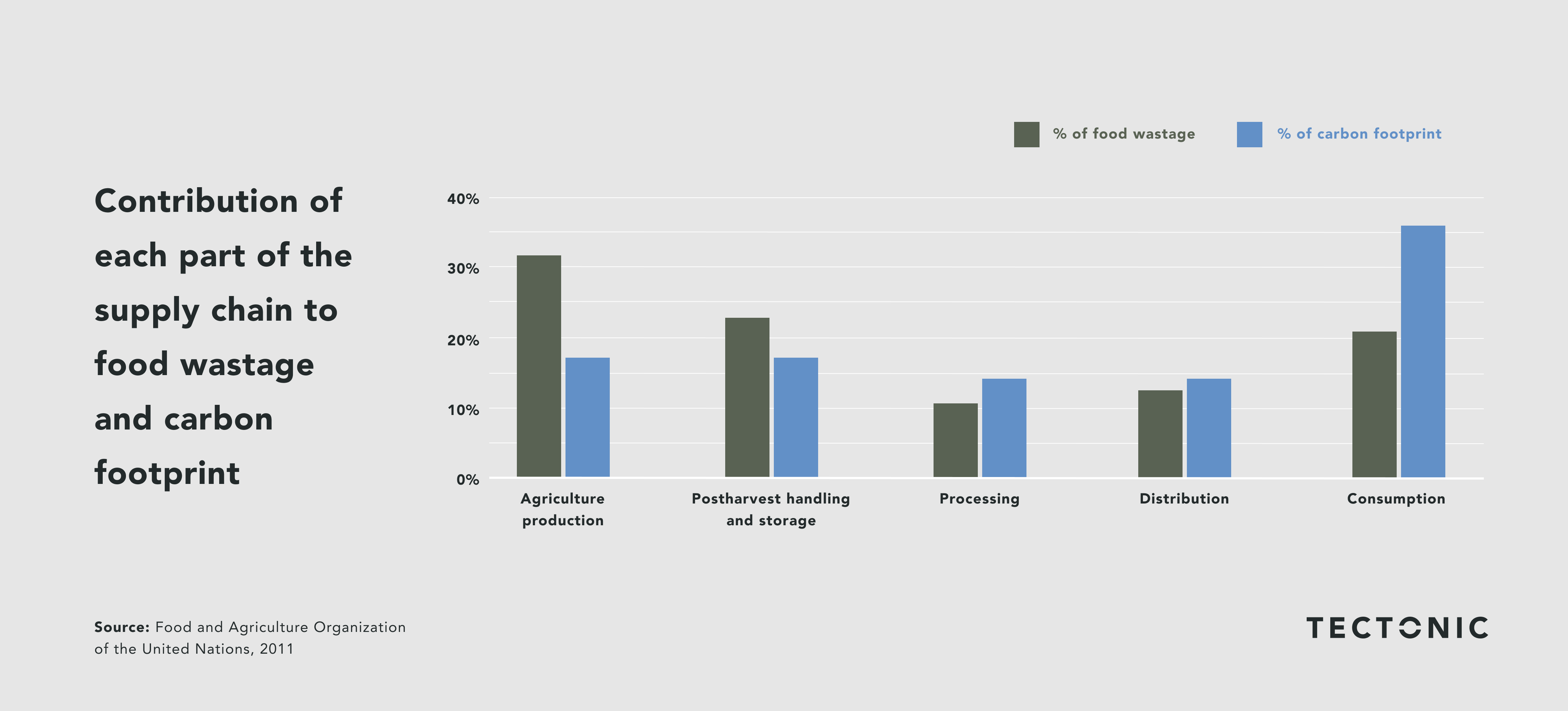Globally, around one-third of all food produced is lost or wasted, amounting to roughly 1.3 billion tons annually. According to the United Nations, if food waste was a country, it would rank third in emissions, after China and the United States.
When food is discarded and rots in landfills, it releases greenhouse gases such as methane, which has a global warming potential of over 28-34 times greater than carbon dioxide over a 100-year timescale. Cutting the emissions from food waste will require addressing the challenge at all phases of the life cycle with innovative interventions at the individual and institutional levels.
What are the leading drivers of food waste?
Food waste occurs at every step of the food “life cycle,” from agricultural production and postharvest handling to processing, distribution, consumption, and end-of-life stages.

The production stage is the biggest contributor to food waste, with more than 500 million tons lost due to crop pests, inefficient harvesting practices, and inadequate irrigation. The next largest contributors are postharvest handling and storage and the consumption phase, each responsible for about 350 million tons of waste. Together, these three stages make up roughly 75% of total food waste. The remaining 35% is wasted from being intentionally thrown out by supermarkets, stores, and households due to improper storage, over-purchasing, misunderstanding of expiration labels, or cosmetically imperfect foods – much of which remains perfectly edible.
What are the solutions for reducing food waste?
A number of innovative approaches have emerged to reduce food waste. One notable area of innovation is the conversion of food waste into energy. Researchers at Cornell University have found a new way to capture nearly all of the energy in food waste through hydrothermal liquefaction – essentially “pressure cooking” the waste to create crude bio-oil that can be refined into a biofuel. In addition, researchers at Virginia Tech are using microorganisms to transform discarded food into “biological oils,” which are then produced into biodegradable polymers called polyhydroxyalkanoates (PHA). These PHAs can be made into home-compostable products like bottles and packaging films, simultaneously tackling food waste and plastic pollution.
At the consumer level, platforms like Too Good To Go and Imperfect Foods (now acquired by Misfits Market) connect consumers with restaurants and grocery stores to sell discounted surplus or “imperfect” produce that would otherwise be discarded due to cosmetic reasons. International campaigns for consumers have also emerged, such as Love Food Hate Waste, which educates consumers on reducing food waste through meal planning tips, portion control, and adequate storage techniques.
Corporations have also stepped up. Hilton's “Travel with Purpose” Corporate Responsibility strategy identified two key waste areas (bread/pastries and fruits) and adjusted portion sizes accordingly, resulting in a 62% reduction in food waste at 14 participating hotels through their “Green Breakfast initiative”.
At the production level, producers can also reduce food waste through precision agriculture. Using technologies like remote sensing, GPS-guided equipment, and drones, farmers can more accurately monitor crop health, soil conditions, and weather patterns to optimize harvesting times, reduce overproduction, and prevent crops from going to waste due to spoilage or damage.
Finally, the federal government is stepping up efforts. In June 2024, the Biden Administration announced a strategy to halve food waste by 2030, backed by over $200 million in investments. It encourages businesses and individuals to reduce food waste, funds research to prolong the shelf life of perishable items, supports policies to cut waste, and finds ways to repurpose food waste into products like compost, gas, or animal feed.
By addressing food waste at all levels of the supply chain, we can reduce greenhouse gas emissions, minimize resource and economic losses, and move closer to a more sustainable future.


